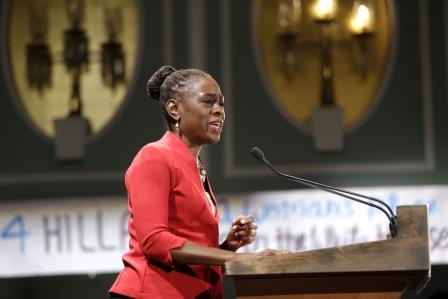New York City Offers a Model for Mental-Health Treatment
New York City Offers a Model for Mental-Health Treatment

May marks Mental Health Awareness Month, a time for reflection on our responsibility to conquer the stigma surrounding mental-health conditions. Although mental health issues are common and treatable, they continue to be overshadowed by silence, shame and hushed tones—often leading to inaction. This is unacceptable.
Many individuals are affected by mental health—in 2014, 43.6 million adults in the U.S. had a mental illness in the past year. But an individual’s struggles are not an isolated issue. While mental illness directly affects 1 in 5 Americans, its impact extends to countless families members, co-workers and loved ones. In social terms, it affects communities, schools and the economy—mental illness is a leading cause of disability in New York City and the U.S. It is a topic of central importance to public health.
The burden of mental illness varies across New York City, reflecting patterns of racial discrimination and socioeconomic disenfranchisement. Severe mental illness is twice as common among adults who live below 200% of the federal poverty level compared to those living 200% above it. Compared to whites, blacks and Latinos are less likely to receive mental-health treatment. People living in New York City’s lowest-income neighborhoods are twice as likely to be hospitalized for mental illness as those in the most affluent neighborhoods.
These disparities, like those found in chronic disease rates, are unjust and avoidable. Likewise, they reflect the damaging stressors born of inequality, the historic lack of preventive services, and our country’s disjointed treatment system that doesn’t address underlying causes of disease.
Led by First Lady Chirlane McCray, New York City is changing all of that. In November 2015, New York City launched ThriveNYC, a plan of 54 initiatives to address this unseen iceberg. We are going beyond offering much-needed additional medical treatment to also changing attitudes, investing in prevention, and engaging diverse sectors in addressing mental health. Our goal is not just to meet individual needs, but to shape a more proactive, supportive social fabric. After all, mental health is everyone’s business.
ThriveNYC could serve as a model for any city nationally. The work being undertaken includes training 250,000 New Yorkers in Mental Health First Aid, which teaches people to better recognize and support those suffering with a mental health condition. Through the Mental Health Corps, New York City will hire 400 clinicians to provide services in high-need communities, where care can be fragmented and frustrating. Through the Connections to Care program, 15 community-based organizations serving low-income, at-risk populations will receive funding to provide mental health support services, training and referrals. ThriveNYC offers a robust mix of citywide and targeted programs to ensure that longstanding inequities in the delivery and receipt of care are finally corrected.
New York City’s public health approach to addressing mental health may be best embodied in the newly established Mental Health Council, comprised of hospitals, insurers, clergy, community-based organizations and advocates with multiple city agencies. The Mental Health Council will bring together the many different sectors that are integral to transforming not just the mental-health system, but the lives of those affected by mental illness, and the social fabric and environment in which they live, and will soon, thrive.
ThriveNYC is just the beginning. It will provide an opportunity to ensure than mental illness stays on the forefront of New York City’s public health agenda. We hope that other cities around the country will do the same. The cost of inaction is too high.
(19)










